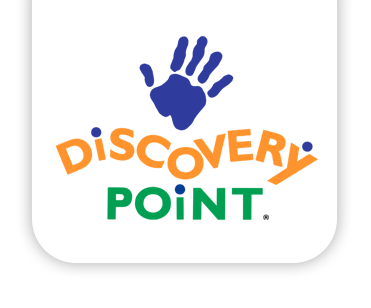Discovery Point Blog

Five Fun and Educational Science Activities for Your Toddler or Preschool Student
Providing your child with opportunities to experience and explore the natural world can help to instill an interest in the sciences that can lead to future successes in the academic environment. At Discovery Point, we specialize in providing children with the age-appropriate experiences and enrichment activities to help them develop their natural talents and to stimulate their curiosity. Here are five of the best science-based activities for your toddler or preschool-aged child.
Color Factory
Clear plastic bottles and bowls are the primary tools used for this activity, which also employs non-staining liquid watercolor paints and other readily available household tools to teach preschoolers and toddlers about the different effects of combining colors and diluting mixtures. A little dishwashing fluid can add colorful bubbles into the mix and may increase the attention spans for younger children while teaching them valuable basic lessons about colors.
Marble Madness
Cardboard tubes, tape and scissors are all that is required to construct simple or complex marble runs that can demonstrate the concepts of gravity, resistance, action and reaction for your preschool-aged child. By cutting small, marble-sized holes in these runs and connecting them in various ways, you can help your child master the practical implications of Newton’s Three Laws of Motion in a fun and memorable way.
Dinosaur Dig
Creating your own paleontological dig site is a simple and entertaining activity that can delight even the youngest members of your family. Plastic toys, sticks and other items can be buried in a sandbox and discovered by an intrepid adventurer wielding a bucket and plastic trowel. Old paintbrushes can be used to remove sand from these finds to add a hint of authenticity to the entire experience for your young explorer.
Space Exploration
Building a cardboard rocket ship can provide opportunities for you to discuss the various challenges of the astronautic field and the basic concepts behind propulsion and resistance. By starting with a plastic bottle and painting it in the desired color, you can create a solid base for your child’s rocket creation. Aluminum foil, paste, stickers and cardboard pieces can be attached to the base to create struts, fins and entry points. Depending on your child’s age and interest, you can use this opportunity to discuss the principles behind multi-stage rockets and the ways in which they propel space vehicles toward their destinations in outer space.
Under Pressure
By combining soda bottles, balloons and effervescent tablets, you can provide a visually appealing and entertaining example of air pressure for younger children. Simply fill a plastic soda bottle most of the way with water. After dropping in one or two tablets, quickly fit the end of a balloon over the opening at the top of the bottle. A small shake or two and your balloon should inflate quickly, demonstrating both the power of expanding gases and the chemical reactions possible when two materials are combined. This activity is best managed outside to avoid accidental spills and extra clean-up for you and your children.
These simple experiments and activities can provide hours of enjoyment for your children while allowing you to introduce basic scientific concepts in a fun and practical way. By spending time with your children and exploring various aspects of the natural world, you can instill excitement about learning that can have a positive impact on future academic performance. At Discovery Point, we work with you to provide your child with educational experiences tailored precisely to suit his or her unique set of talents and needs.


